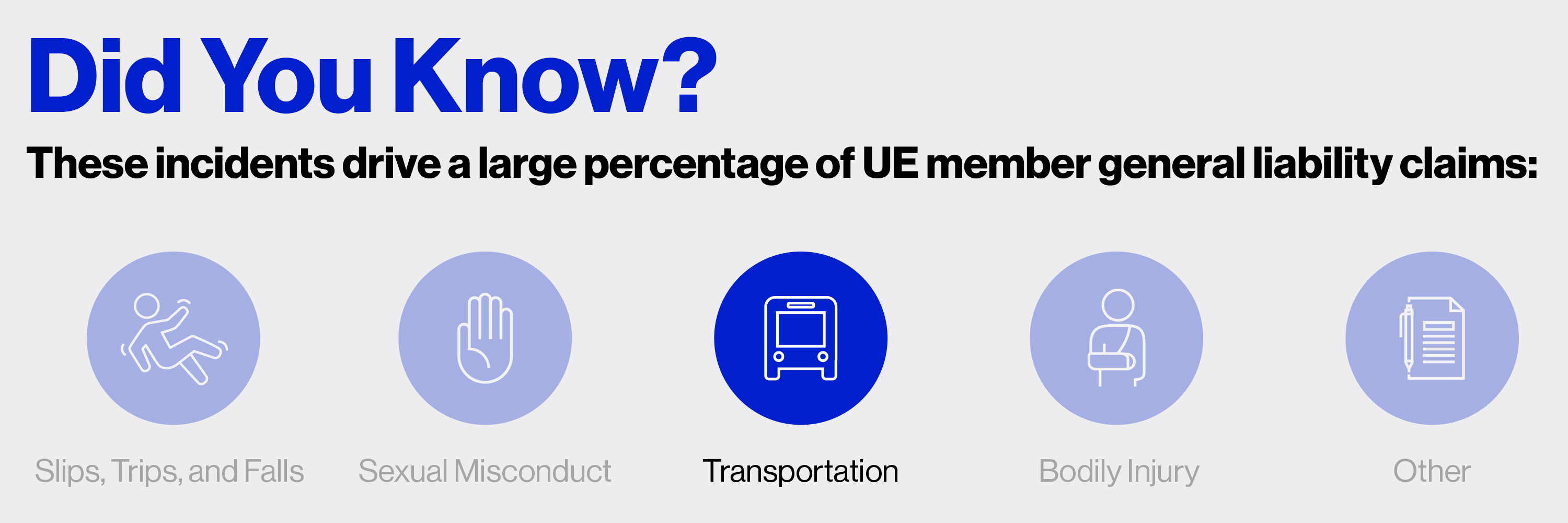Drake University Creates Comprehensive Golf Cart Use Policy

Drake University recently crafted a comprehensive golf cart use policy due to increased golf cart injures and accidents nationwide.
The new process establishes steps students, faculty, and staff must take before Drake grants them permission to drive a campus golf cart. Drake’s approach includes motor vehicle record (MVR) checks, online safety training, and in-person driving instruction.
Between the university’s Facility Planning & Management, Athletics, and Information Technology departments, about 30 golf carts or utility vehicles are used daily. The university has a list of about 200 approved employee and student drivers. “With that many carts and drivers on campus, crafting a comprehensive policy became a priority,” says Kelly Foster, Business & Insurance Manager, University Administration.
Drake implemented the policy in April 2022 and plans to have all drivers trained by Sept. 1, 2022.
“Just hearing about other schools and their programs, we realized how much we needed a policy,” Foster says. “Our policy makes people aware of how dangerous a golf cart can be if it’s not driven appropriately, and what safety measures need to be followed to prevent incidents and accidents from happening.”
Foster collaborated with Drake’s Director of Health and Safety, Chris Nickell, to create a policy that includes a campus map detailing cart pathways, defines who can and can’t drive carts, and addresses what to do in the event of an accident. They drew from different universities’ websites to make sure their own policy was as comprehensive as possible.
Under Drake’s policy, if people want to drive a golf cart on campus, they must first contact the Risk and Insurance Office and complete a MVR form so Drake can check their driving history. Drake doesn’t let people drive university-owned vehicles on campus if they’ve surpassed six points on their driver’s license or if they’ve had minor offenses such as speeding within the past three years or more serious offenses such as DUI or driving with a suspended license within the past five years.
Eligible drivers receive a link to a 20-minute golf cart safety video. The video includes general instruction on how to drive, stop, and park a cart. Drivers must pass an online test after watching the video.
Once they pass the test, drivers must receive in-person golf cart training on a closed course. The course has cones drivers must navigate around, and drivers must complete a three-point turn and pull in and out of parking spaces. This helps ensure drivers are comfortable with Drake’s carts and are safe behind the wheel.
Create a Training Safety Checklist
When Drake leaders created the policy, they also crafted a checklist for driving instructors to complete as they provide in-person training. This ensures instructors properly explain how to use carts and provide learners with best practices and procedures related to golf cart use.
After instructors cover all topics listed on the checklist, employees and students taking the training sign off that they’ve learned everything listed on the form.
“The checklist ensures we don’t miss anything when we’re speaking with them, but it also makes sure [learners] acknowledge that we went through it,” Foster said. “You can send procedures to people to read on their own, but probably most of the time they’re not going to read it. Talking through the checklist and answering any questions that they have is a lot more beneficial than just saying, ‘All right, here’s a list. Make sure you read it before you drive.’”
Drake Designated a Campus Cart Route Map
In the past, Drake’s Facilities department needed to fix damage caused by people who drove carts on grass.
So when Drake crafted the policy, leaders worked with Facilities staff and Drake’s Public Safety department to create a campus cart route map indicating where drivers should go (outlined in green) and where they’re not recommended to travel (outlined in red). The green areas typically have wider sidewalks or less pedestrian traffic.
Drake shares the map with departments and drivers who receive training.
More Strategies When Launching a Golf Cart Policy
Drake leaders believe driving carts through the heart of campus is a high-risk activity. Based on Foster’s experiences at Drake, she recommends institutions consider these strategies when addressing golf cart policies:
Checking Driving History Is Vital
To protect students and employees, ensure that only good drivers are allowed to use the vehicles. In that way, drivers treat the use of golf carts as they would other university-owned vehicles.
Don’t Solely Rely on Training Videos
In-person training is essential. When Drake began providing in-person training, administrators found that some people had years of experience driving carts while others had no experience. One driver hadn’t even driven a car for three years — he’d been riding on buses.
When first driving carts, people might be surprised by the speed with which the cart can travel and might not understand the vehicle’s turning radius. And some drivers have plenty of questions for instructors, including how to drive forward or in reverse.
Don’t Forget About Renters, Either
Some departments at Drake rent golf carts for events. The university addresses that in its policy.
When departments rent a cart, they must supply the names of drivers. If the names aren’t already on Drake’s list of approved drivers, the new drivers must complete the same online and in-person training before they can use the rental cart.
